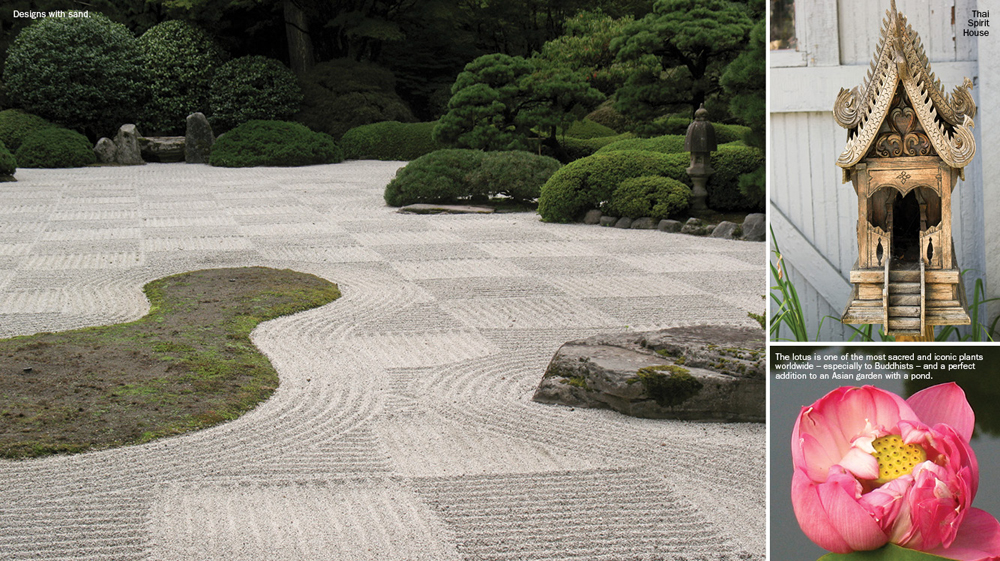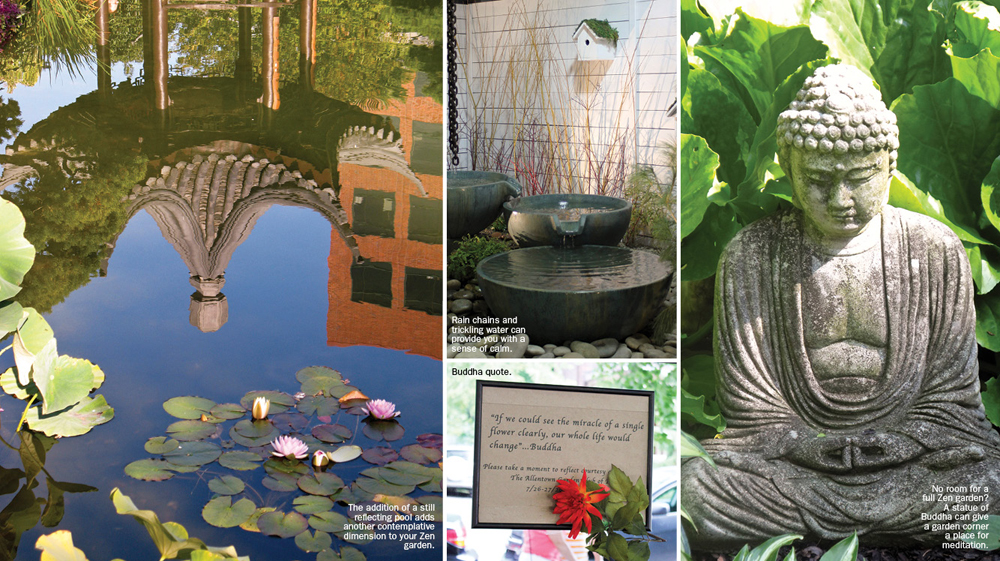Community 06:00 AM by Kathy Wood MuskokaLife
MUSKOKA LIFE — We live in a world full of hustle and bustle where life is lived 24/7. The technology that was supposed to give us more leisure time has done the exact opposite connecting us to our offices and business on a full-time basis which has led to an increase in mental and physical health issues from young to old. The recognition of this phenomena is why the horticultural industry has been trending a focus the past two years on turning off the tech and getting back out into the restorative influence of nature. Silence and solitude has the power to calm our bodies and souls, to reduce heart and anxiety issues and a multitude of other health challenges. And what better way to enjoy nature than by creating your own private Zen sanctuary with an Asian influence.
Historically, Zen gardens were created in the 14th century by Buddhist monks for meditation and solitude. Built in small spaces within monasteries these simple gardens composed of gravel, rock, stones and moss where arranged to represent the natural landscape scenery around them. The rocks and stones represented hills and mountains while raked sand or gravel in wave-like patterns provided the impression of moving water. True Zen gardens are typically devoid of water, while Japanese gardens will usually have a real water component. Originally, Zen gardens were built for observation only from a place outside the garden, providing the essence of contemplation. Later, paths were added so one could interact within the garden space, providing walking meditation. As Zen gardens became more popular, additional elements were added, including: bridges; lakes and pools; and lighting (real or implied).
Zen gardens were initially considered to be minimalist in design. Then, the Japanese borrowed from Chinese gardens and today Zen gardens incorporate a mixture of elements from Japan, China and Korea, incorporating aesthetics, philosophy and love of all things Asian. The basic principles include balance, symbolism, and simplicity as traditional Japanese garden design encourages “shibusa” a feeling of calm tranquility, peace and refined taste. It has also been called Wabi Sabi Suki. Wabi refers to tranquil simplicity through the design style of the garden, Sabi the aged patina produced by moss and old rocks, and Suki the subtle elegance that is created by changing light in the garden or through the movement of ornamental grasses and bamboo when the breeze blows. The Eastern philosophy of Yin (magnetic, receptive, feminine) and Yang (creative, dynamic, male energy) is also important as each component of the garden flows into the other to make the whole. It’s about balance and harmony.
Japanese philosophy is brought to life in the garden with subtle nuances, strong clean lines and shapes and asymmetric placement through the three most important elements of stone, water and trees. In a Zen garden, water is represented by white or beige gravel or sand carefully raked with a specially designed rake into formed ridges to represent the movement of water. Stones and rocks are the sacred elements of traditional Chinese gardens, symbolizing grounding, power, stability and timelessness. A few well-chosen stones can be a focal point for meditation and represent mountains and hills typical of Japanese and Chinese topography. And the contrast of water and stone (real or implied) embodies Yin and Yang (soft and hard).
As Zen gardens became more popular, additional elements were added, including: bridges; lakes and pools; and lighting


In creating this type of garden, plants are considered an accessory to the key constituents of gravel and stone. As calm is the goal when choosing plant material, it is soothing shades of green and gray that are to be sought after. A monochromatic garden will provide rest for the eye with no flashy flowers to disturb the effect of tranquility. Purists will say that moss should be the only living component of a Japanese or Zen garden, for it gives that aged patina imparting a calming influence. For those with a sunny location, moss is not an option so you might want to try bamboo, a sacred plant in most Asian cultures, as it is symbolic of connecting heaven and earth. With a deep, strong root system, it bends easily but doesn’t break and is graceful in maturity, for it remains evergreen through the growing season. However, beware as some varieties can be invasive. In an urban setting, leaves on trees, bamboo and the seedheads of ornamental grasses – along with gently bubbling water – can be helpful in covering sounds of daily life that distract from the tranquility of your private sanctuary.
The addition of wind chimes and rain chains are the music of nature. Chimes with harmonic tuning can draw music from the wind, encouraging the universal life force called chi, so listen carefully when selecting wind chimes and choose one with a pleasant sound that resonates with you. Bird houses, feeders and birdbaths will encourage birds to visit your garden providing more of nature’s musical sounds. Stone lanterns, a moon gate or bridge, and perhaps a small pond as a home for Koi fish, are trademarks of Asian gardens. There are many more Asian elements you can include in your garden but always remember “less is more,” so only include those that speak to your spirit.
Remember when designing your Zen garden, that simplicity and balance is the key, a garden that is easy on the eye, low-maintenance and evokes a sense of the sacred. Incorporation of the ancient art of feng shui in the garden – of living in harmony with our environment – is part of the healing nature of nature. By encouraging chi and the natural energies of the world around us we can be restored mind, body and soul in a healthy manner on a daily basis in our own private sanctuary. If creating a full Asian-inspired garden seems a bit daunting to you, how about carving out a corner of your existing garden where you can retreat at the end of a hectic day for a little bit of meditation and contemplation and enjoy the restorative healing power of nature.
For more information on creating your own Zen garden, check out these books: Authentic Japanese Gardens: Creating Japanese Design and Detail in the Western Garden, by Yoko Kawaguchi; Secret Teachings in the Art of Japanese Gardens: Design Principles, Aesthetic Values, by David A. Slawson; and Japanese Zen Gardens by Russell B. Chard.




